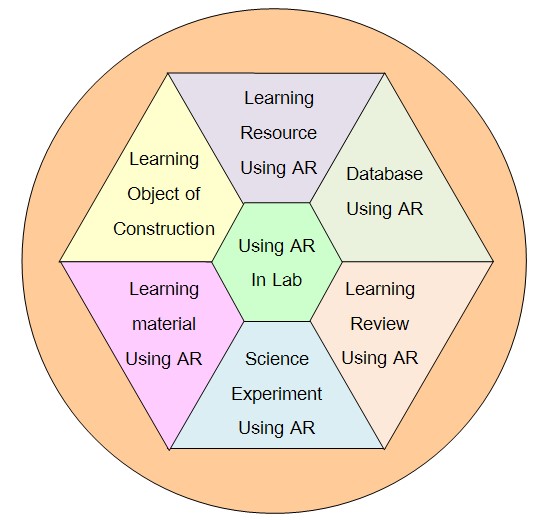แนวทางในการจัดการเรียนรู้ในห้องปฏิบัติการวิทยาศาสตร์โดยใช้เทคโนโลยีเสมือนจริง
Main Article Content
Abstract
Somsak Techakosit and Namom Jeerangsuwan
รับบทความ: 11 ตุลาคม 2556; ยอมรับตีพิมพ์: 24 พฤศจิกายน 2556
บทคัดย่อ
การวิจัยครั้งนี้มีวัตถุประสงค์เพื่อศึกษา 1) การใช้ประโยชน์ห้องปฏิบัติการวิทยาศาสตร์ 2) ข้อจำกัดของการจัดกิจกรรมการเรียนการสอนในห้องปฏิบัติการวิทยาศาสตร์ 3) สภาพแวดล้อมในห้องวิทยาศาสตร์ที่ส่งเสริมการเรียนรู้ของนักเรียน และ 4) แนวทางในการจัดการเรียนรู้ในห้องปฏิบัติการวิทยาศาสตร์โดยใช้เทคโนโลยีเสมือนจริง ผู้วิจัยใช้ระเบียบวิธีการวิจัยโดยใช้เทคนิคเดลฟาย ชักตัวอย่างแบบเจาะจงประกอบด้วยอาจารย์ผู้สอนวิชาวิทยาศาสตร์ระดับมัธยมศึกษาโรงเรียนสาธิตแห่งมหาวิทยาลัยเกษตรศาสตร์ ศูนย์วิจัยและพัฒนาการศึกษา ที่มีประสบการณ์การสอนไม่น้อยกว่า 5 ปีและใช้เทคโนโลยีทางคอมพิวเตอร์เป็นสื่อการสอน จำนวน 7 ท่าน อาจารย์สาขาวิชาวิทยาศาสตร์ศึกษา คณะศึกษาศาสตร์ มหาวิทยาลัยเกษตรศาสตร์ จำนวน 5 ท่าน และผู้เชี่ยวชาญด้านเทคโนโลยีเสมือนจริงที่มีประสบการณ์ออกแบบสื่อการเรียนการสอนด้วยเทคโนโลยีเสมือนจริงในพิพิธภัณฑ์เทคโนโลยีสารสนเทศ จำนวน 5 ท่าน โดยการเก็บข้อมูลจากแบบสอบถามความคิดเห็น 3 รอบ และวิเคราะห์ข้อมูลด้วยการพิจารณาผลจากการตอบของผู้เชี่ยวชาญที่มีค่ามัธยฐาน (median, Md) ตั้งแต่ 3.50 และค่าพิสัยระหว่างควอร์ไทล์ (interquartile range: IQR) มีค่าน้อยกว่าหรือเท่ากับ 1.50 ผลการวิจัยพบว่า 1) การใช้ประโยชน์ในการจัดการเรียนการสอนในห้องปฏิบัติการวิทยาศาสตร์ คือ 1.1) เป็นห้องทดลองวิทยาศาสตร์ 1.2) จัดการเรียนการสอน 1.3) เป็นที่จัดเก็บอุปกรณ์การทดลอง 1.4) จัดแสดงสื่อการเรียนการสอน 2) ข้อจำกัดของการใช้ห้องปฏิบัติการวิทยาศาสตร์ในการจัดการเรียนการสอน คือ 2.1) อุปกรณ์การทดลองบางอย่างไม่ทันสมัย 2.2) บางการทดลองมีอันตราย นักเรียนไม่สามารถทดลองได้ 2.3) ชุดอุปกรณ์การทดลองไม่มีคุณภาพ 2.4) นักเรียนไม่มีอิสระในทดลองเอง และ 2.5) ชุดอุปกรณ์การทดลองไม่เพียงพอกับจำนวนนักเรียน 3) สภาพแวดล้อมในห้องปฏิบัติการวิทยาศาสตร์ที่ส่งเสริมการเรียนรู้ของนักเรียน คือ 3.1) มีอุปกรณ์ให้นักเรียนใช้สืบค้นหาความรู้อย่างพอเพียง 3.2) มีบรรยากาศที่เหมาะสมต่อการเรียนรู้ 3.3) มีมุมให้นักเรียนค้นคว้าศึกษาด้วยตนเอง 3.4) ส่งเสริมการลงมือปฏิบัติจริง 4) แนวทางในการจัดการเรียนรู้ในห้องปฏิบัติการวิทยาศาสตร์โดยใช้เทคโนโลยีเสมือนจริงประกอบด้วย 4.1) ใช้เทคโนโลยีเสมือนจริงเป็นแหล่งการเรียนรู้ 4.2) เป็นฐานข้อมูล 4.3) ใช้ทบทวนความรู้ 4.4) ใช้เป็นชุดทดลองวิทยาศาสตร์ 4.5) เป็นสื่อการเรียนการสอน และ 4.6) ให้นักเรียนสร้างชิ้นงาน
คำสำคัญ: เทคโนโลยีเสมือนจริง การจัดการเรียนรู้ ห้องปฏิบัติการวิทยาศาสตร์
Abstract
The objectives of the research study were to study 1) the use of the laboratory, 2) the limitations of having the teaching and learning in the laboratory, 3) the environment in the laboratory which encourages the students’ learning, and 4) the guidelines to organize the teaching and learning with the use of augmented reality in the laboratory. The Delphi technique was used for the research methodology. The sample groups selected by purposive sampling comprised seven specialists who were High School Science teachers with at least 5-year experience and used a computer as a medium of construction, five Science lecturers from the Faculty of Education, and five specialists in Augmented Reality. Data were compiled three times by using the same questionnaires. Data analysis used Median of 3.50 and above, and interquartile range of 1.50 or lower. The result was found out that for 1) the use of the laboratory, the laboratory was used 1.1) to conduct scientific experiments, 1.2) to provide the teaching and learning, 1.3) to store experimental equipment, and 1.4) to display learning materials; 2) the limitations of having the teaching and learning in the laboratory were 2.1) out of date equipment, 2.2) dangerous experiments that students could not conduct, 2.3) disqualifying experimental sets, 2.4) lack of independence for students to conduct an experiment on their own, and 2.5) insufficiency of experimental sets; 3) The environment in the laboratory which encourages the students’ learning was 3.1) sufficient equipment to search for knowledgeable information, 3.2) suitable atmosphere for learning, 3.3) a self-study corner, and 3.4) a hands-on experiment; 4) The guidelines to organize the teaching and learning with the use of augmented reality in the laboratory included the use of augmented reality 4.1) as a source of learning, 4.2) as a data base, 4.3) as a review, 4.4) as a Science experimental set, 4.5) as a teaching and learning material, and 4.6) as a student’s project.
Keywords: Augmented Reality, Learning Management, Laboratory
Downloads
Article Details

This work is licensed under a Creative Commons Attribution-NonCommercial 4.0 International License.
References
โครงการ PISA ประเทศไทย สถาบันส่งเสริมการสอนวิทยาศาสตร์และเทคโนโลยี. (2554). ผลการประเมิน PISA 2009 การอ่าน คณิตศาสตร์ และวิทยาศาสตร์. กรุงเทพ: อรุณการพิมพ์.
ณมน จีรังสุวรรณ. (2556). หลักการออกแบบและประเมิน. พิมพ์ครั้งที่ 3. กรุงเทพฯ: ศูนย์ผลิตตำราเรียน มหา-วิทยาลัยเทคโนโลยีพระจอมเกล้าพระนครเหนือ.
ปกป้อง จันวิทย์ และศุภณัฏฐ์ ศศิวุฒิวัฒน์. (2556). การพัฒนาทุนมนุษย์เพื่อผลิตภาพ. โมเดลใหม่ในการพัฒนา: สู่การเติบโตอย่างมีคุณภาพโดยการเพิ่มผลิตภาพ, หน้า 1–55. กรุงเทพฯ: มูลนิธิสถาบันวิจัยเพื่อการพัฒนาประเทศไทย.
พนิดา ตันศิริ. (2553). โลกเสมือนผสานโลกจริง. นักบริหาร 30(2): 169–175.
สมเกียรติ พรพิสุทธิมาศ. (2556). การจัดการเรียนรู้วิทยาศาสตร์ในศตวรรษที่ 21. วารสารหน่วยวิจัยวิทยา-ศาสตร์ เทคโนโลยี และสิ่งแวดล้อมเพื่อการเรียนรู้ 4(1): 55–63.
Azuma, R. T. (1997). A Survey of Augmented Reality. Retrieved from www.cs.unc.edu/~azuma/ARpresence. pdf, June 15, 2013.
Chang, G., Morreale, P., and Medicherla, P. (2010). Applications of augmented reality systems in education. In Gibson, D. & Dodge, B. (Eds.). Proceedings of Society for Information Technology & Teacher Education International Conference 2010, pp. 1380–1385. Chesapeake, VA: AACE.
de Jong, T.; Linn, M. C. and Zacharia, Z. C. (2013). Phy-sical and virtual laboratories in science and engi-neering education. Science 340: 305–308.
Halim, L., Ahmad, C. N. C., Abdullah, S. I. S. S. and Meerah, T. S. M. (2012). Teachers’ perception of science laboratory learning environment and its relationship to teachers’ satisfaction. The International Journal of Learning 18(8): 67–77.
Larsen, Y. C., Buchholz, H., Brosda, C. and Bogner, F. X. (2011). Evaluation of a portable and inter-active augmented reality learning system by teachers and students. Augmented Reality in Education Proceedings of the “Science Center To Go” Workshops, pp. 41-50. Athens: Ellinogermaniki Agogi.
Lee, K. (2012). Augmented reality in education and train-ing. TechTrends 56 (2): 13-21.
Partnership for 21st Century Skills. (2009a). Learning Environments: A 21st Century Skills Implementation Guide. Retrieved from www.p21.org/.../p21 stateimp_learning_environments.pdf, December 15, 2013.
Partnership for 21st Century Skills. (2009b). Framework for 21st Century Learning. Retrieved from www. p21.org/storage/documents/P21_Framework.pdf, December 15, 2013.
Shelton, B. E., and Hedley, N. R. (2002). Using augment-ed reality for teaching earth-sun relationships to undergraduate geography students. The First IEEE International Augmented Reality Toolkit Workshop, pp. 1–8. Darmstadt: IEEE.
Tatli, Z., and Ayas, A. (2012). Virtual chemistry laboratory: effect of constructivist learning environment. Turkish Online Journal of Distance Education-TOJDE January 2012 13(1): 183–199.
Vilkonienė, M. (2009). Influence of augmented reality technology upon pupils’ knowledge about human digestive system: The results of the experiment. US-China Education Review 6(1): 36-43.
